
Ashley Cook
July 8, 2024
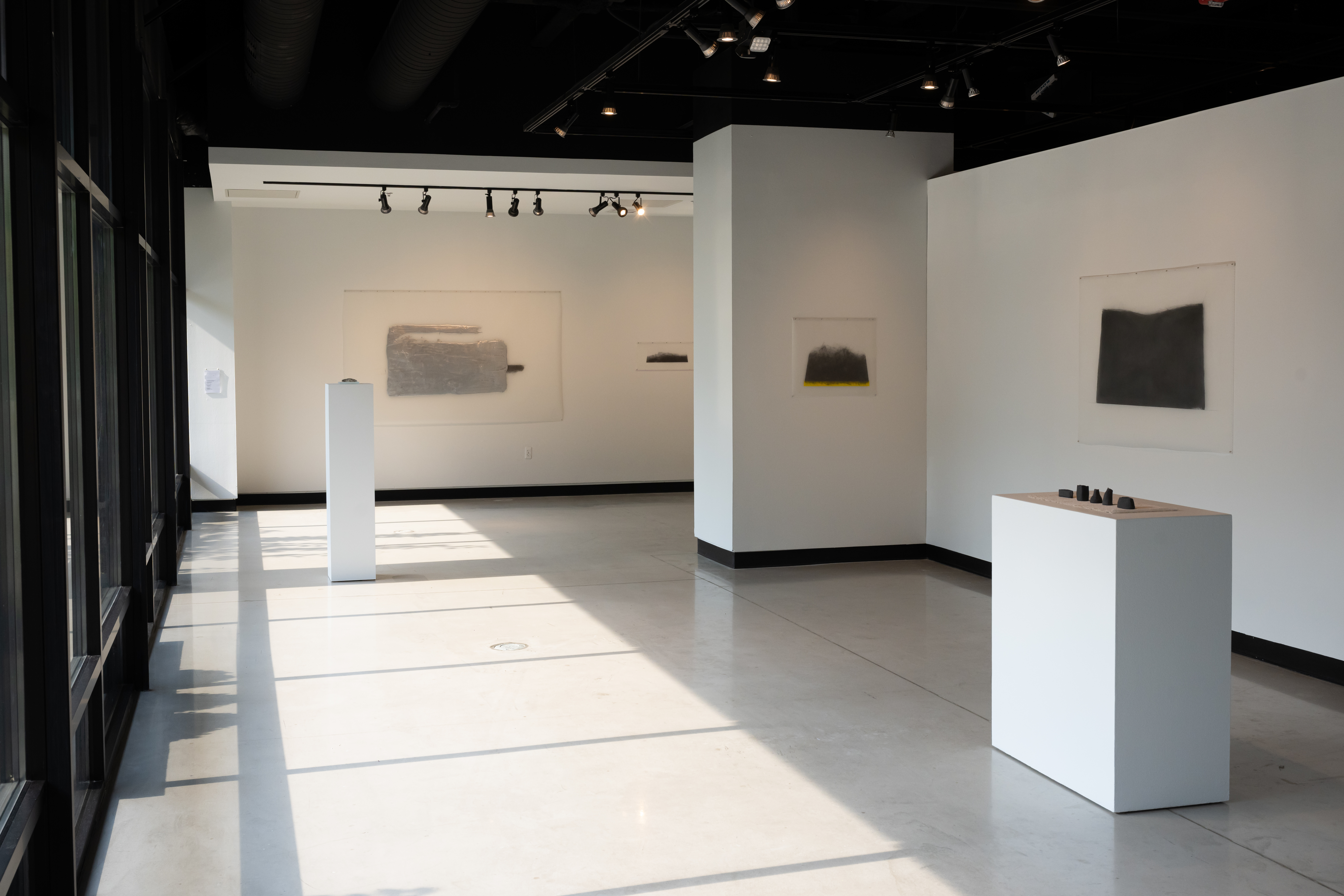
The decline of decadence throughout history has positively revealed that emptiness is never nothing. It is actually a vessel that offers the experience of a quiet and observant mind. The value of simplicity lies in the boundlessness of its influence. As a philosophy, it crosses mediums and disciplines, from religion and architecture to art and fashion. Elizabeth Youngblood is a Detroit-based artist who has demonstrated a dedication to simplicity. Her exhibition Syntax at Stamps Gallery affirms her continued reverence for minimalist philosophies, presenting a survey of her work from the 1970s until now.
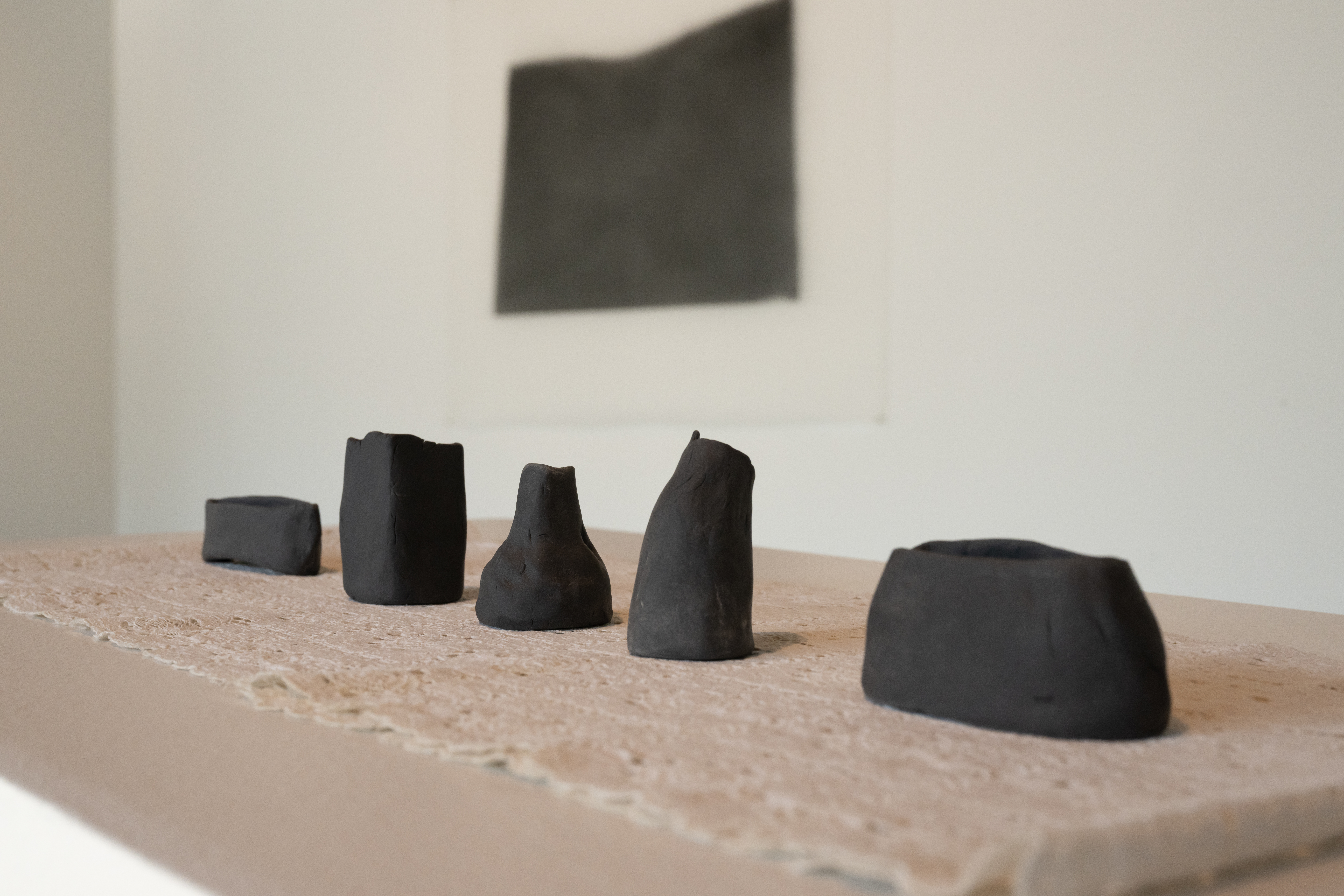
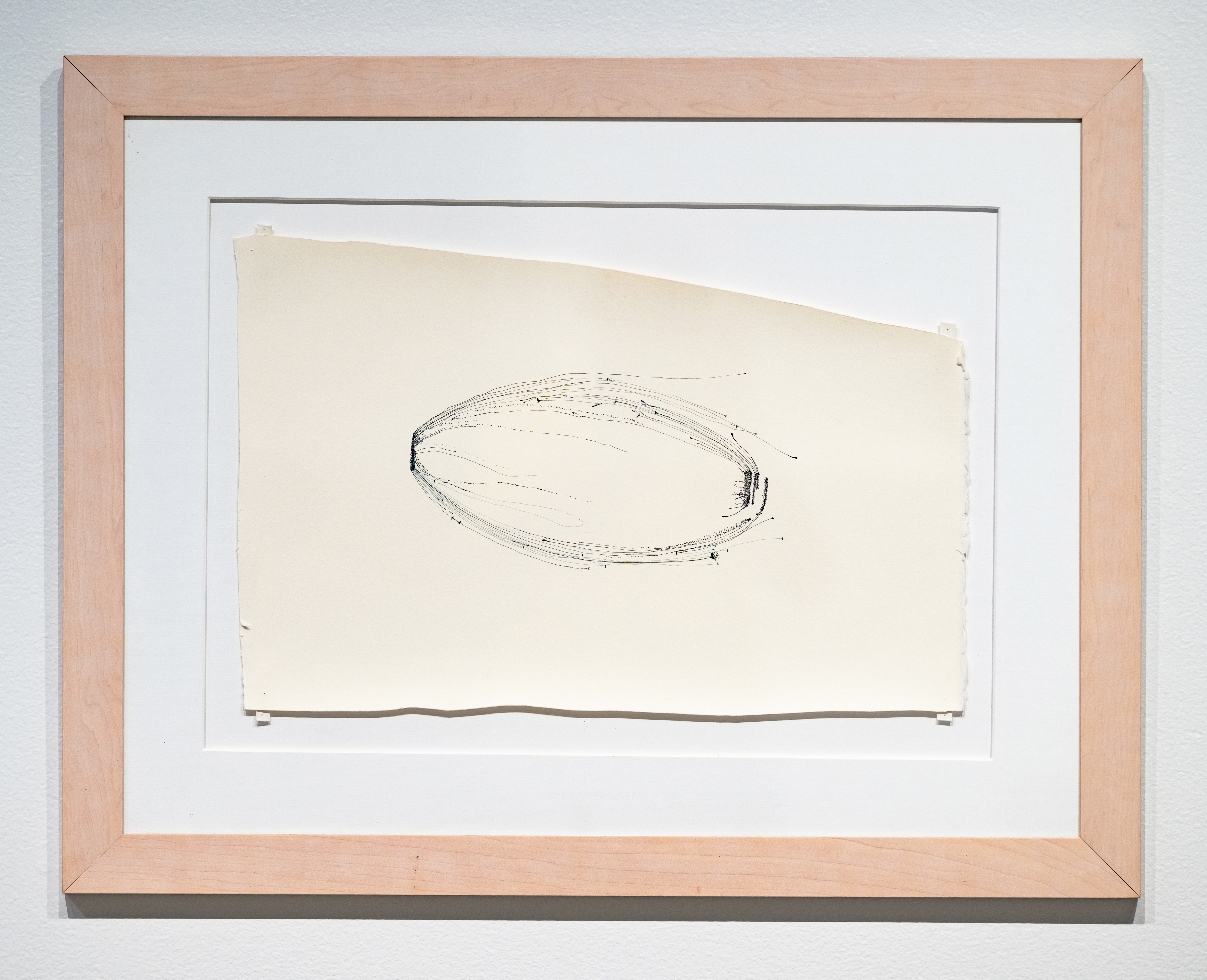
Youngblood emerged as a practicing ceramicist, artist and graphic designer in the late 1960s, surrounded by the conversations of abstract expressionism and minimalism that were prevalent at that time. Her love for the work of artists like Mark Rothko has informed her creative methodologies by underlining the transcendental possibilities of form and color relationships. This detail is evident in all of the disciplines that she has practiced throughout her career, and is effectively illustrated here, through the inclusion of archival posters, delicate sculptural forms and works on paper. The show is nearly monochromatic, utilizing graphite and black pigments to complement the light tones of their surrounding surfaces. Similar to the still lifes of Georgio Morandi, the forms have a weightlessness to them, floating in space as if alternating from geometric to amoebic in real time. Each individual work is a new study on precarity. Tuning into the fragile materials of dried clay, charcoal, thread, and wire is like trying to hear a faint sound; both are forever on the edge of existence, and could at any moment be gone.
It is a luxury to experience brevity and fragility. Despite the artist being recognized for her ability to surrender to chance and embrace the act of play as an approach to creative production, her early work as a potter was actually highly precise, with a dominating concern for perfection. When reflecting on the trajectory of her work, Youngblood expressed gratitude for one person in particular, an instructor at the University of Arts. “I did not know what to do other than continue to strive to create perfect ceramic forms. My professor could tell that I was stuck and said to me ‘we all know you can throw, now do something interesting’. She was spot on and after that, I began to open my eyes with a new kind of curiosity.”1 As she slowly traded rigidity for fluidity, Youngblood herself also went from feeling tightly bound to untangled and free.
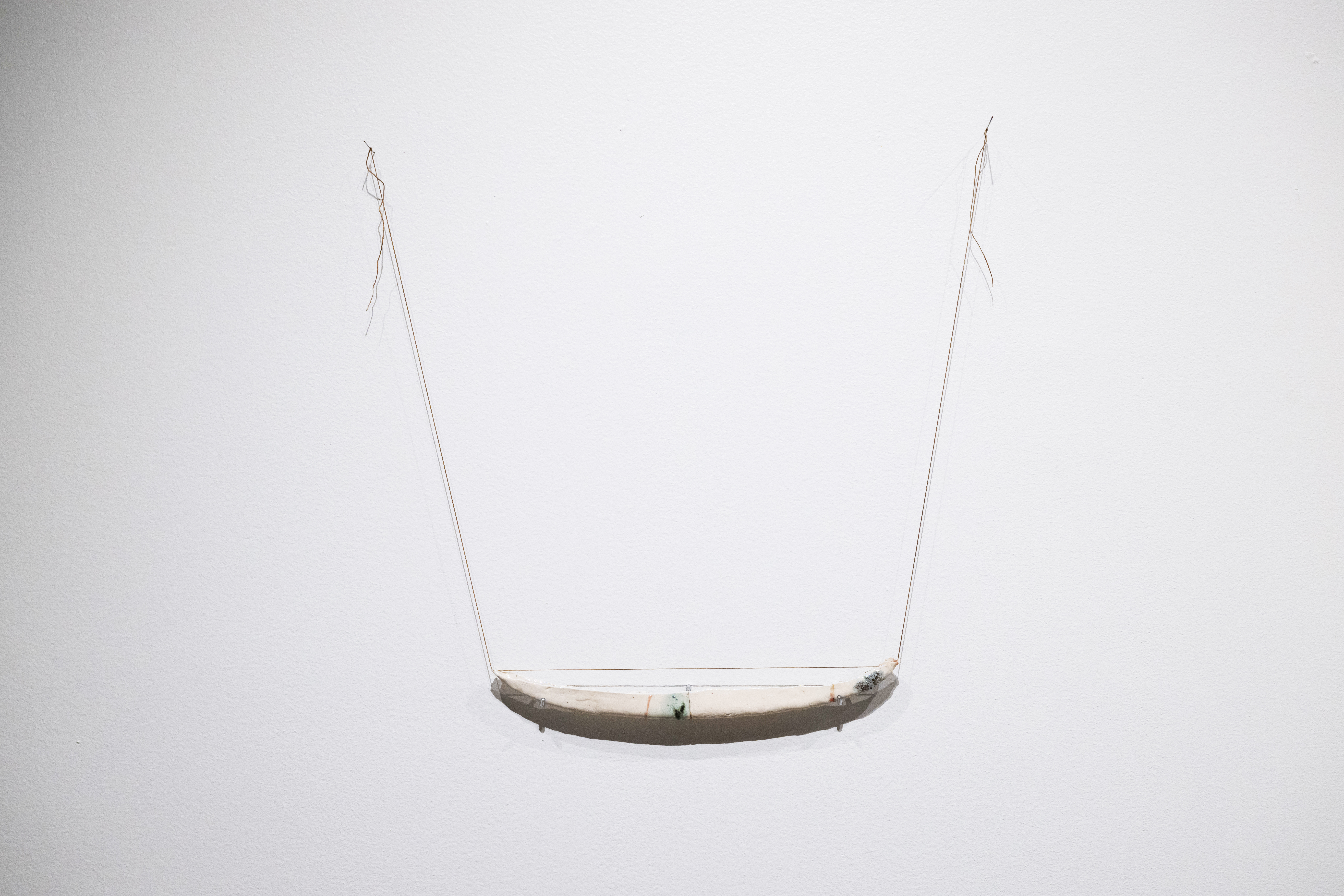
Tranquility was the muse to support her surrender into the unknown. She became fully present while creating, which fostered an appreciation for the poetry of chance. Whether the work on the walls and the pedestals here started out as studies or were meant to be final pieces at the beginning, they share space in a way that seems non-hierarchical. Like the Fluxus art movement that emphasized the artistic process over the finished product, “the drawings are not just about what is in front of you, but it’s about who I was at the time I made it.”2 This coexistence of the sketch and finished work reiterates the essential role of play for the artist, while challenging preconceived notions of worth surrounding the production and exhibition of art.
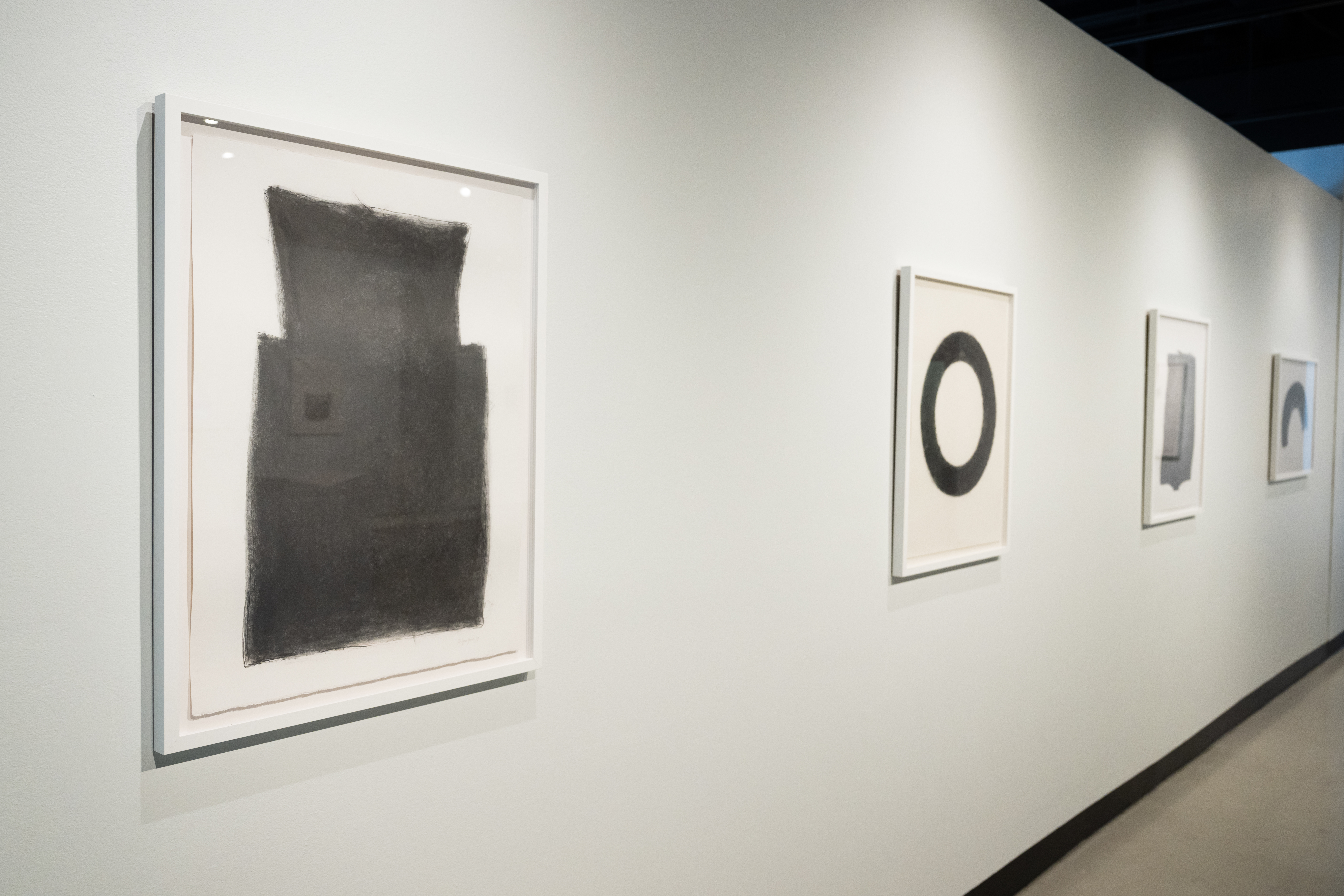
The act of sustaining a creative practice for more than fifty years is encompassing. Patterns and tendencies become phrases of a personal language that is used to express thoughts without words. In the case of Elizabeth Youngblood, there is an absence of emotion and a presence of quiet confidence. Her visual explorations seem to be as comfortable as breathing, existing with everything to give and nothing to prove. Youngblood’s invested interest in the concept of absence and things that are there but not necessarily seen has the potential to extend past the realm of art and influence the way that we see and exist in the world. It is like a path of enchantment that spotlights the details of life that are otherwise so often overlooked.
Syntax by Elizabeth Youngblood at Stamps Gallery was curated by Srimoyee Mitra. The show opened on June 20 and will be on view until August 3, 2024.
On Space, Lines, Grids, and Ways of Knowing: The Art of Elizabeth Youngblood is a panel discussion scheduled to take place on July 10th at 6-7pm at Stamps Gallery.
https://stamps.umich.edu/events/elizabeth-youngblood-syntax
1. Elizabeth Youngblood in discussion with Ashley Cook, June 2024.
2. Youngblood discussion with Ashley Cook
All images courtey of Stamps Gallery